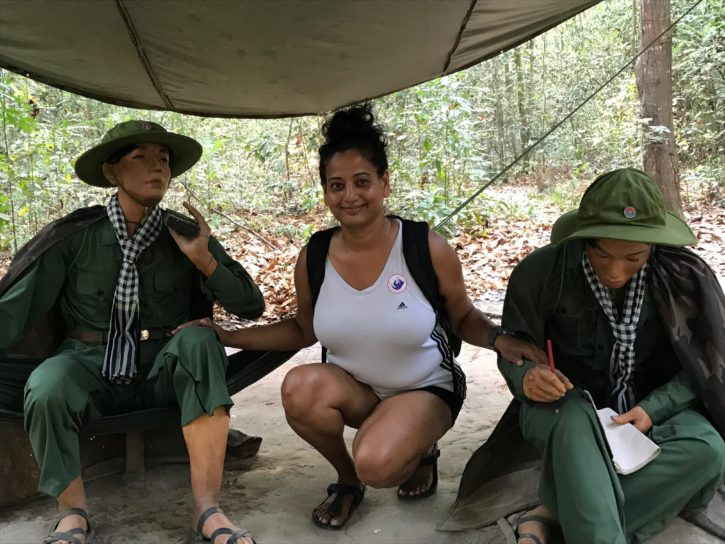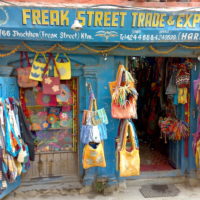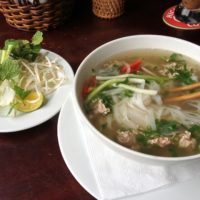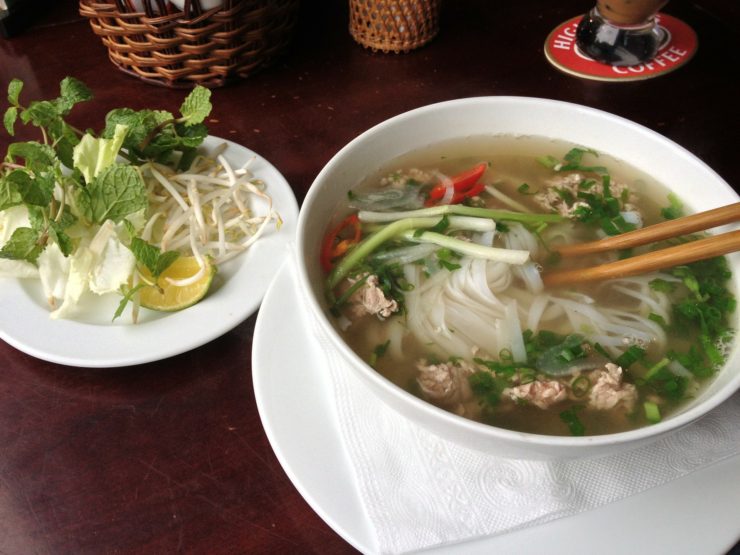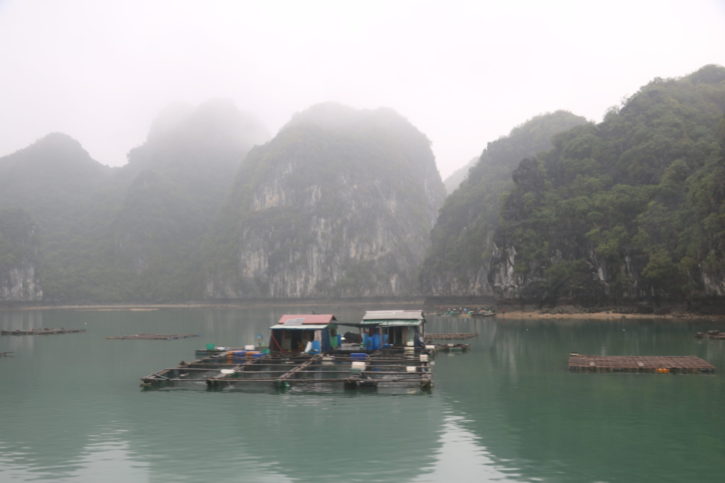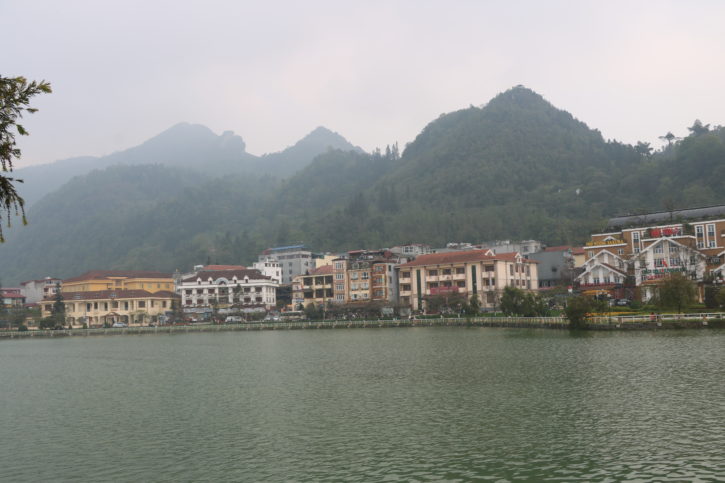You have heard of tunnels – but the famed Cu Chi tunnels of Vietnam are quite something else. There is nothing romantic or adventurous about it – but what it is, is a grim evidence of the Vietnam’s troubled history.
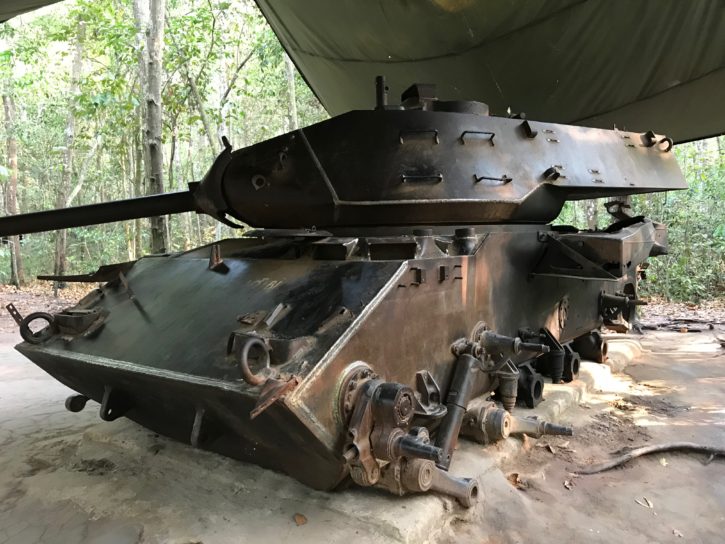
I had little or no idea what I was going to find at the end of my journey to this historical site, but what I did find was that no matter what I am never getting inside a tunnel ever again! To think that some of these tunnels are barely big enough to let you through.
Why are they important
Cu Chi tunnels are an extensive network of hand carved tunnels – and some of the most horrifying remains of the Vietnam War – this much I knew when I set off on a day trip from Saigon (Ho Chi Minh). Unless you have lots of time and patience, I’d recommend taking the organized trips which can easily be booked at your place of stay mostly. The tunnels are located fifty kilometers from the city and takes about an hour and a half to get there and includes a stop at a crafts centre run by the survivors of Agent Orange.
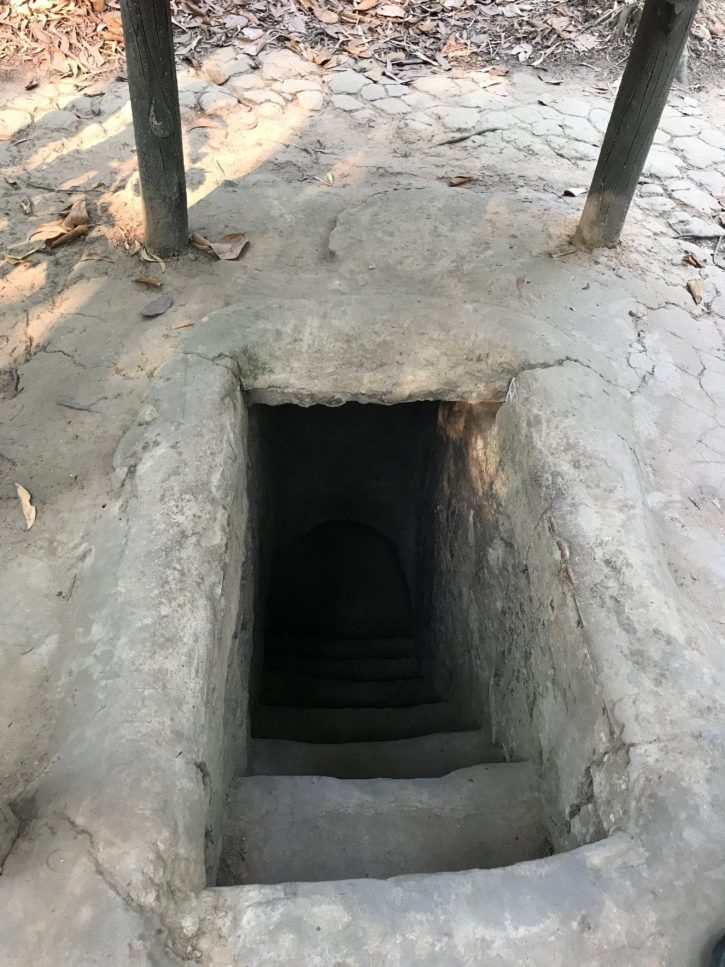

A Brief History of the Cu Chi Tunnels
The Cu Chi Tunnels are complex and layered tunnels, consist of connecting rooms, air vents, escape routes and booby traps were hand-carved during the French occupation in the 1960’s and 70’s. They are believed to extend all the way to neighbouring Cambodia – or so the guide joked!
Although today’s Cu Chi tunnels have been slightly expanded to fit an average built tourist, many sections still require crawling, sometimes on all fours, to get to the other end. These tunnels played an important role in winning the war of independence – it was said that if the Cu Chi Tunnels fell, the Vietnamese would have lost the war. But if they stood, they would win.
They won.
It took the industrious Vietnamese twenty-five years to dig these tunnels. Originally built as a means of communication between villages, these tunnels also helped the locals evade the French troops in the area. However, during the American War, the Cu Chi tunnels were extended over an area of approximately 250 kilometers, thus assuming a strategic importance to the Viet Cong fighting troops.
The tunnels doubled up as home for thousands of Viet Cong guerrillas, but it also contained complex structures like bunkers, booby traps, bomb shelters, trenches and air ventilation system. It was here the soldiers cooked, ate, slept, worked during the conflict. Hospitals and schools were also built into these tunnels.
Did you know?The Viet-Cong set up booby traps around tunnel entrances to avoid being spotted by American troops. These traps accounted for nearly 11 per cent of all deaths related to the war. There are two sites open to public – the more popular Ben Dinh and the less crowded Ben Duoc, both providing different experiences. |
What to Do at the Cu Chi Tunnels
Whilst here, there is so much a visitor can do and see. From exploring the area, tunnel-crawling, watching documentaries, seeing exhibits and exploring traps, everything gives out the feeling of being in a “war” zone. There are depressions in the forest left by B-52 bombs, which make for interesting pictures. Before you enter the tunnels, make sure to watch the documentary video showing the lives of the Viet Cong and of the locals, to have a better understanding of the hardships.
The atmosphere at the Cu Chi tunnels is like a bizarre theme park and includes a rifle range where you can fire off AK47 and M16 rounds, but despite the ‘fun’ feel, it really is a reflection on the struggle waged by communist warriors.
Ben Dinh or Ben Duoc
At some point i your trip this questions is certainly going to pop into your mind – Ben Dinh or Ben Duoc? i had this question too. Here is the lowdown to help make your decision – Budget aside, the Ben Duoc (part of the Cu Chi tunnel network) is a bit further away from HCMC and depending on your mode of transportation probably adds an hour to your trip. Well worth it, as Ben Duoc is a much more authentic experience (parts of the original tunnel system have been preserved), and it is less crowded.
Some tips to plan your travel better
- There is no dress code but wear clothing you do not mind getting dirty.
- A comfortable pair of sneakers is a good idea as you will be walking quite a bit.
- Sunblock and insect repellent would be a thing to bring along.
- The Cu Chi Tunnels are open during rainy season, there will be no flooding inside the tunnels, but you might get muddier than usual. Come prepared.
- People with claustrophobia and high-blood pressure are advised not to go into the tunnels.
Despite its importance, Cu Chi is not treated as a typical reverent war memorial. There is no reverent reflection on the horrors of war, rather you exit the park through a gift shop that sells souvenir bullets. It celebrates the ingenuity and heroism of the Cu Chi people.
But to get a comprehensive view of the war, visit the War Remnant Museum in Ho Chi Minh (erstwhile Saigon).
Rung Sac Guerilla Base
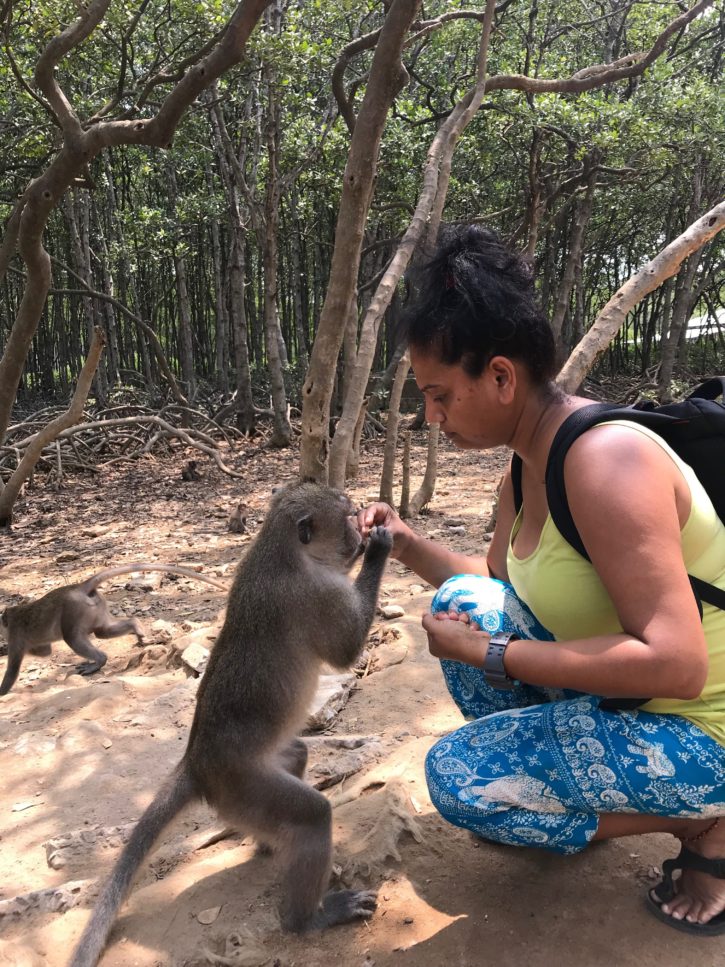
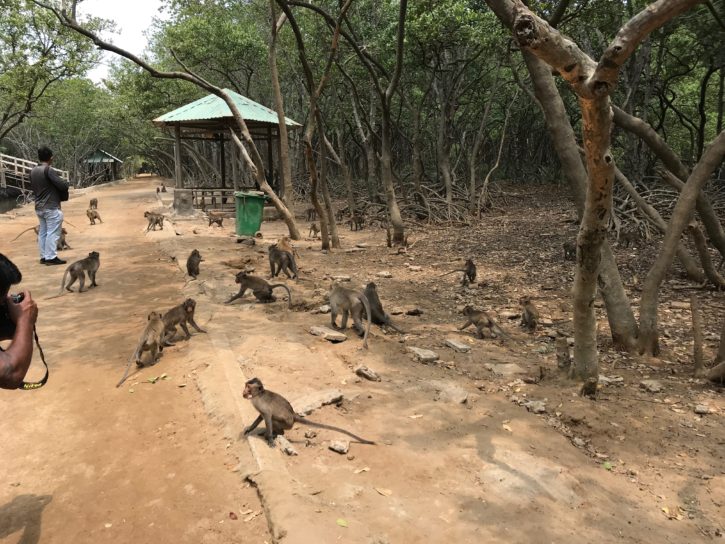
Continue the tour of Vietnam’s history at Can Gio mango forest (or Rung Sac), seventy kilometers away from Ho Chi Minh City. I did this as a separate trip though. The travel includes a ferry crossing across the Nha Be River. Can Gio island and is part of grand Can Gio Mangrove Biosphere Reserve, which is a UNESCO recognized area since 2000. The area comprises of over 80,000 hectares of mangroves, wetlands, and wildlife and also known as the Rung Sac Special Zone. The mangrove trees seen today were planted after the war and they were preserved as an ecological zone.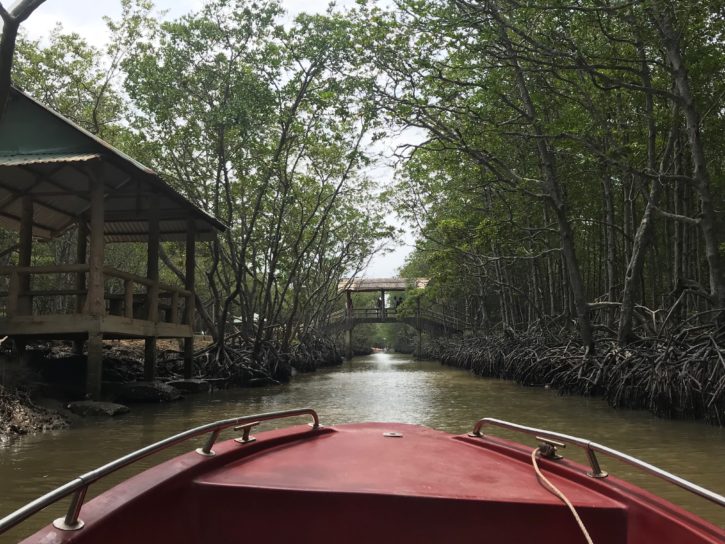
The island is filled with “friendly monkeys” and a large number of bird varieties. Once you get past the primates looking to feed off your snacks and crocodiles waiting to be fed, take a speed boat to explore the Sac guerilla camp built in deep jungle. The boat glides along the crisscross waterway flanked by thick mangrove forests to the base that was stationed by Viet Cong from the period of 1966 -1975. It used to be an important base camp to set up over 1,000 combats to Saigon.
There are some houses used as the guerilla headquarters, guest house, military supplies area, small arm factory to make weapons and an information center here. This gives the visitor an insight into what life was in the jungle during the time of war, without communication and being surrounded by forests and crocodiles. This area has a walking path which showcases various aspects of the soldiers’ lives and how they used the area in war times. Mannequin soldiers are used in the scenes to help with visualization.
Some of the props included soldiers carrying the wounded and a soldier killing a crocodile.
While you are in Vietnam, how about giving Sapa a try? You wont regret it!

